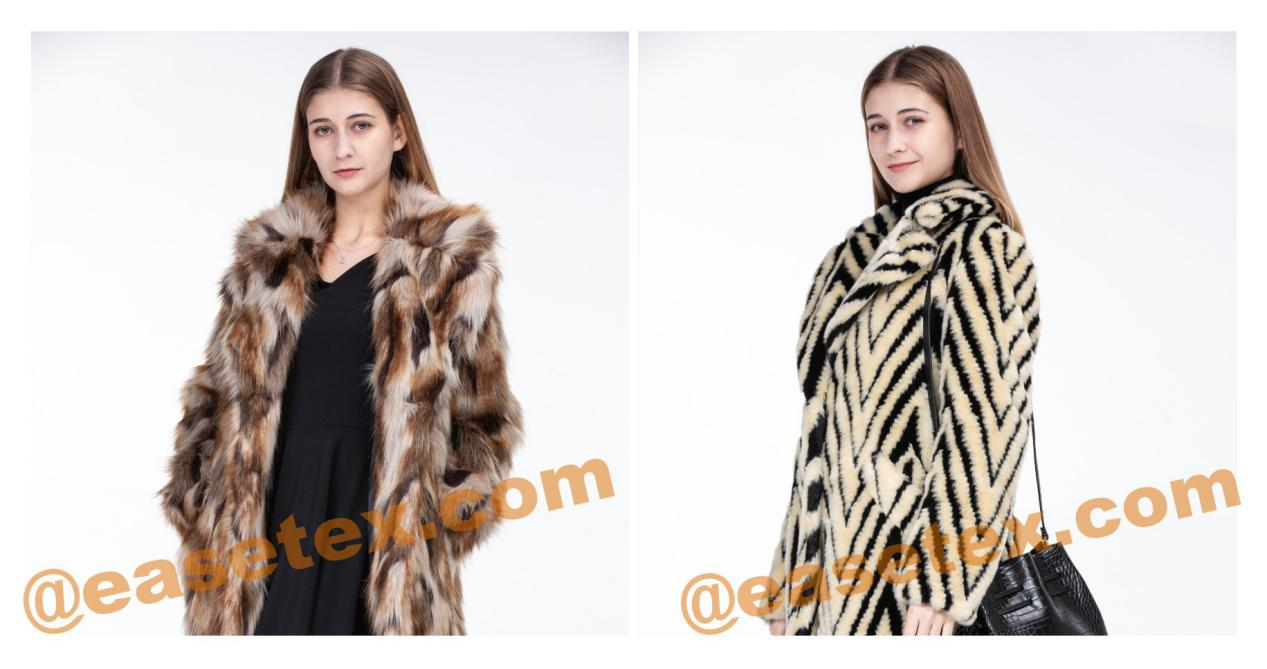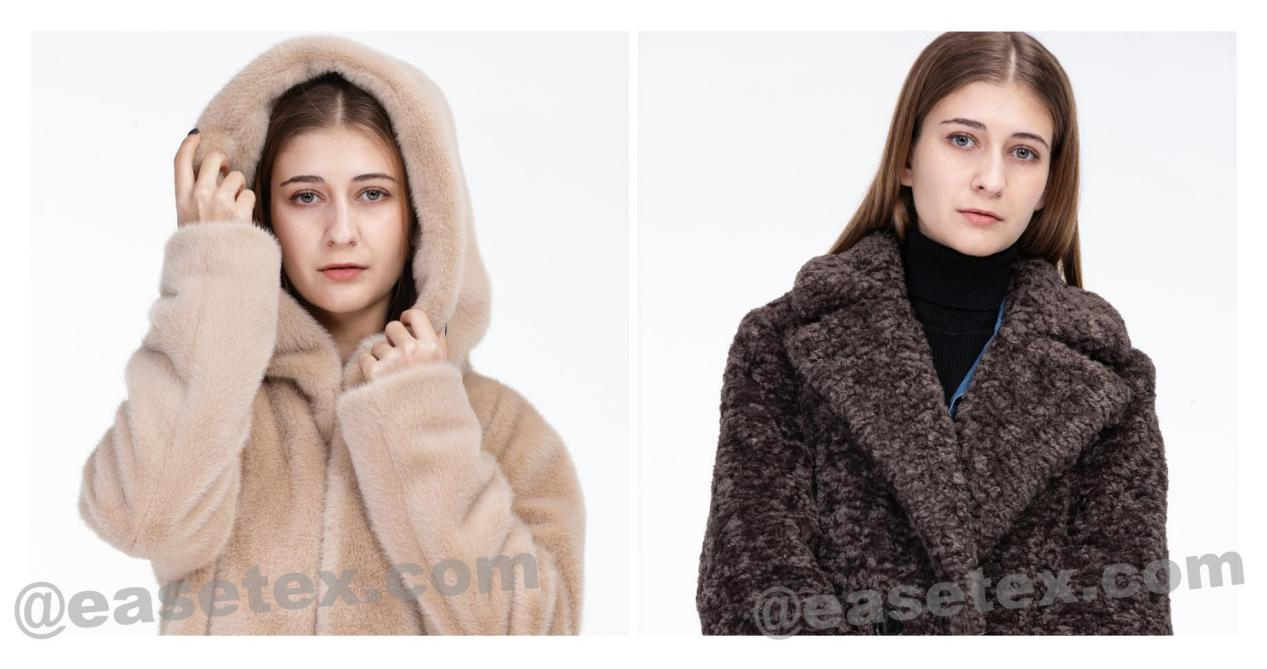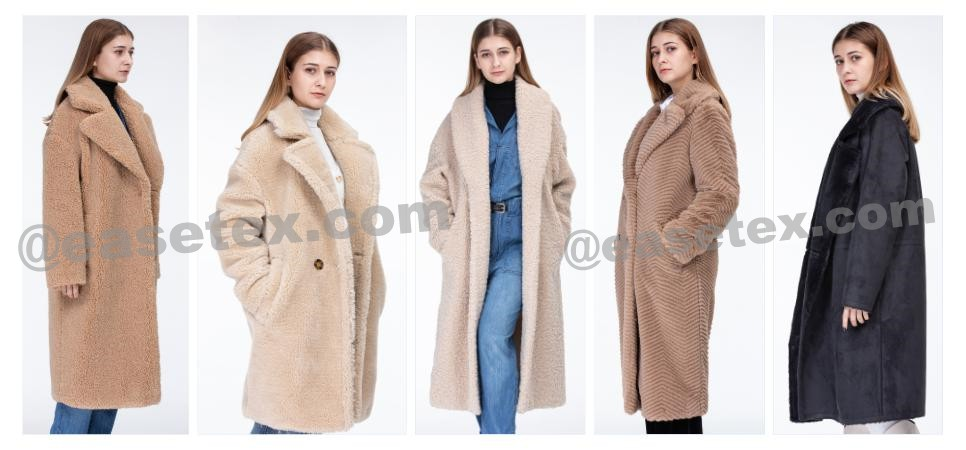Blog
3 reasons to choose polyester faux fur instead of acrylic one
When we talk about faux fur fabric, acrylic/polyester blends may quickly spring to your mind. Even if you google "faux fur," you will have similar information. But things have been changed; polyester faux fur is now a better substitute for traditional acrylic/polyester blended one.
Before we list why we choose polyester, let's see the common items on the market.
Acrylic faux fur
We start to use acrylic to produce faux fur for more than half a century. As a circular knitted fabric, we usually use acrylic or modacrylic as pile and polyester as ground. So, the fabric composition is around 80% acrylic/modacrylic, 20% polyester. Due to the combined properties of the fibers' cross-sectional shape, glossiness, fineness, and length, and the type of fiber, modacrylic fiber (also named modified acrylic) are the best polymers that can reach the natural look real feel of faux fur. The percentage of acrylic and modacrylic differs from the item. But modacrylic is always expensive than acrylic material.

Figure 1: Acrylic/modacrylic/polyester blended faux fur by Easetex
100% polyester faux fur
Polyester faux fur is not new, but old-fashioned one is like knitted PV plush, coral fleece, and velour that is mainly used in home textiles like blankets, throws, cushions, and soft toys. As a leading faux fur manufacturer in China, Easetex Industries start the innovation of polyester faux fur in 2010. Their polyester faux fur has good comprehensive properties. It is comparable with the acrylic one.

Figure 2: 100% polyester faux fur fabrics by Easetex
3 reasons that we suggest choosing polyester faux fur
First, as the conventional chemical fibers, polyester has competitive price power over acrylic and modacrylic.
Second, polyester faux fur can have a lighter weight than acrylic/modacrylic one. In this case, faux fur can be used in spring and autumn collections. Also, as it is not as puffy as old acrylic one, it can be more suitable for the fashion styles of youth.
Third, part of polyester faux fur items can meet sustainable requirements while acrylic and modacrylic ones not.
Here is a brief introduction to sustainable faux fur:
Recycled polyester, often called rPET. It is a great way to divert plastic from our landfills. The production of recycled polyester requires far fewer resources than new fibers and generates fewer CO2 emissions. So, our recycled polyester faux fur is sustainable.
Bio-based faux fur: Sorona® is the DuPont brand name for renewably sourced PTT (polytrimethylene terephthalate). 37% of the polymer is made using annually renewable plant-based ingredients. Compared to Nylon 6 it uses 30% less energy and releases 63% fewer greenhouse gas emissions.
Sorona® for faux fur is made with 70% to 100% bio-based Sorona® polymer fibers.
(Please refer to my article "How companies can source sustainable faux fur fabric?" for more details.)

Figure 3: 100% polyester faux fur by Easetex
There are, of course, some advantages that polyester faux fur can not have. Acrylic faux fur still is the best substitution for some real luxury fur like faux mink fur and faux raccoon fur. But polyester is the fast-growing item in the faux fur family, innovations from material, manufacturing technique, and machinery. After all, price always the main attraction. That is why I suggest you put polyester faux fur as your main priority.
Please share this article if you find it helpful.
RELATED NEWS
- Green to Wear (GTW) by Inditex 2024-01-17
- What Is Faux Shearling? 2022-06-16
- How to Choose Faux Fur Fabrics for Mass Market Buyers 2022-05-20
- How to Choose the Right Faux Fur Apparel Supplier? 2022-05-20
- Why is Easetex Industries one of the best woollen fabric manufacturers for your 2022-04-07
Categories
Share
Contact Us
E-mail: info@easetex.com
Whatsapp:+86.13705175290
Add: 12th Floor Chunfeng Mansion,37 Huaqiao Road, Nanjing 210029,China